The Dark Side of Chocolate is a danois film of genre Drama
The Dark Side of Chocolate (2010)

If you like this film, let us know!
OriginDanemark
Themes Films about children, Environmental films, Films about slavery, Documentary films about business, Documentary films about law, Documentary films about environmental issues, Documentaire sur une personnalité, Documentary films about child abuse, Films about child abuse
Rating74%










The Dark Side of Chocolate is a 2010 documentary film about the exploitation and slavetrading of African children to harvest chocolate still occurring nearly ten years after the cocoa industry pledged to end it.
Synopsis
In 2001, the Chocolate Manufacturers Association formed an action plan entitled the Harkin-Engel Protocol aimed at ending child trafficking and slave labor in the cocoa industry.Comments
Leave comment :
Suggestions of similar film to The Dark Side of Chocolate
There are 69701 with the same cinematographic genres (including 1041 with exactly the same 2 genres than The Dark Side of Chocolate), 5856 films with the same themes (including 0 films with the same 9 themes than The Dark Side of Chocolate), to have finally 70 suggestions of similar films.If you liked The Dark Side of Chocolate, you will probably like those similar films :

Strawberry Fields (2006)
, 1hOrigin Israel
Genres Drama, Documentary, Fantasy
Themes Films set in Africa, Environmental films, Films about religion, Documentary films about business, Documentary films about law, Documentary films about environmental issues, Documentary films about war, Documentary films about historical events, Documentaire sur une personnalité, Documentary films about politics, Documentary films about religion, Political films, Films about Jews and Judaism
Actors Mitsuki Tanimura, Yuria Haga
Strawberry Fields points out that strawberries grown in Gaza are the only agricultural product marketed internationally as being of Palestinian origin. One of the major Gaza strawberry farms in located at Beit Lahiya. More than 1,500 tons of strawberries are exported from Gaza to Europe through the Israeli company Agrexco. In order to get overseas, however, the fruits need to pass through the checkpoint that separates Israel and Gaza. The 2005–2006 growing season coincided with the Israel's disengagement from Gaza and the rise of Hamas as the ruling political entity. The armed conflict between Israel and Hamas resulted in the closing of the border checkpoint. The strawberries grown at Beit Lahiya cannot leave Gaza, resulting in significant losses for the farmers and their Agrexco partners. Unable to transport their produce, the farmers have no choice but to dispose of their crop and prepare for the following year’s growing season.

Bangkok Girl (2005)
, 43minutesGenres Drama, Biography, Documentary
Themes Films about children, Films about sexuality, Erotic films, Films about prostitution, Documentary films about law, Documentaire sur une personnalité, Documentary films about prostitution, Documentary films about child abuse, Films about child abuse
Rating64%





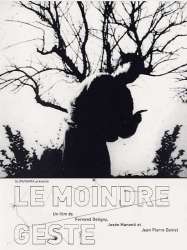
The Slightest Gesture (1971)
Genres Drama, Documentary
Themes Films about children, Medical-themed films, Psychologie, Documentary films about law, Documentary films about child abuse, Films about psychiatry, Films about disabilities, Films about autism, Films about child abuse
Rating73%





Yves est considéré par l’institution hospitalière comme « inéducable et irrécupérable ». Pris en charge en 1958 par Fernand Deligny, éducateur singulier dont les tentatives de cures libres refusaient l’ordinaire des méthodes psychiatriques, Yves devient en 1962 le personnage central d’un film tourné dans les Cévennes. Yves et Richard s’évadent de l’asile. En se cachant, Richard tombe dans un trou. La fille d’un ouvrier de la carrière proche observe Yves resté seul et le ramène à l’asile.

Thieves of Innocence (2005)
Directed by Paul Arcand
Genres Drama, Documentary, Romance
Themes Films about children, Documentary films about law, Documentary films about child abuse, Films about child abuse
Actors Paul Arcand, Dan Bigras
Rating68%





Film choc au style pamphlétaire, le documentaire brosse un portrait critique de la protection de la jeunesse au Québec. Il utilise des chiffres alarmants comme le nombre de signalements à la Direction de la protection de la jeunesse, les estimés du nombre de bébés victimes d’infanticide, le nombre d’enfants placés, etc. pour questionner la responsabilité citoyenne et institutionnelle face aux enfants en besoin de protection. Avec des extraits d’entrevues de victimes, il réfère à des exemples de situations graves et très médiatisés de maltraitance ou d’abus sexuels, comme ceux de Nathalie Simard ou celui du « Bourreau de Beaumont », qui a aussi fait les manchettes et qui a été l’objet d’une enquête de la Commission des droits de la personne et des droits de la jeunesse dans ce questionnement. Vingt-cinq ans après l’avènement de la Loi sur la protection de la jeunesse, le documentaire critique le système de protection de la jeunesse pour sa grosseur, ses lourdeurs administratives et certaines de ses pratiques.
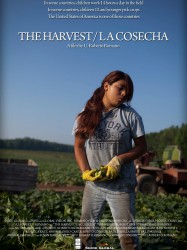
The Harvest (La Cosecha) (2011)
, 1h20Origin USA
Genres Documentary
Themes Films about children, Environmental films, Films about the labor movement, Documentary films about business, Documentary films about law, Documentary films about environmental issues, Documentaire sur une personnalité, Documentary films about politics, Documentary films about child abuse, Political films, Films about child abuse
Rating69%





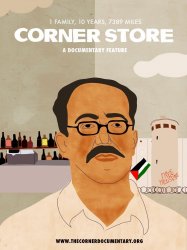
Corner Store (2010)
, 1h33Origin USA
Genres Drama, Documentary
Themes Films set in Africa, Films about religion, Documentary films about business, Documentary films about law, Documentary films about war, Documentary films about historical events, Documentaire sur une personnalité, Documentary films about politics, Documentary films about religion, Political films, Films about Jews and Judaism
Rating67%






Tarnation (2003)
, 1h30Directed by Jonathan Caouette
Origin USA
Genres Drama, Documentary, Romance
Themes L'adolescence, Films about children, Medical-themed films, Psychologie, Films about sexuality, LGBT-related films, Documentary films about business, Documentary films about the film industry, Documentaire sur l'homosexualité, Documentaire sur une personnalité, Documentary films about health care, Films about psychiatry, Films about disabilities, Autobiographical documentary films, Teen LGBT-related films, LGBT-related films, LGBT-related film
Actors Jonathan Caouette
Rating70%





Tarnation est l'autoportrait de Jonathan Caouette, 31 ans, qui dès l'âge de 11 ans décide de filmer la vie chaotique qu'il mène dans une famille texane, à Houston.
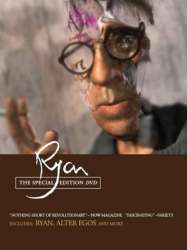
Ryan (2004)
, 13minutesDirected by Chris Landreth
Origin Canada
Genres Drama, Documentary, Fantasy, Animation
Themes Films about alcoholism, Films about films, Medical-themed films, Films about drugs, Documentary films about business, Documentary films about the visual arts, Documentary films about the film industry, Documentary films about law, Documentaire sur une personnalité, Documentary films about health care, Films about psychiatry, Films about disabilities
Actors Ryan Larkin, Chris Landreth
Rating74%





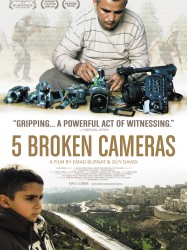
Five Broken Cameras (2011)
, 1h34Origin Israel
Genres Drama, War, Documentary, Crime
Themes Films set in Africa, Films about films, Films about religion, Documentary films about business, Documentary films about the film industry, Documentary films about law, Documentary films about war, Documentary films about historical events, Documentaire sur une personnalité, Documentary films about politics, Documentary films about religion, Political films, Films about Jews and Judaism, Documentary films about films
Rating78%





There are five cameras — each with its own story. When his fourth son, Gibreel, is born in 2005, self-taught cameraman Emad Burnat, a Palestinian villager, gets his first camera. At the same time in his village of Bil’in, the Israelis begin bulldozing village olive groves to build a barrier to separate Bil'in from the Jewish Settlement Modi'in Illit. The barrier's route cuts off 60% of Bil'in farmland and the villagers resist this seizure of more of their land by the settlers.
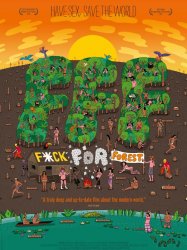
Fuck for Forest (2012)
Genres Drama, Documentary
Themes Environmental films, Films about sexuality, Films about pornography, Documentary films about business, Documentary films about the film industry, Documentary films about environmental issues, Documentary films about nature
Rating52%





The documentary follows Fuck for Forest, or FFF, a non-profit environmental organization founded in 2004 in Norway by Leona Johansson and Tommy Hol Ellingsen, which raises money for rescuing the world's rainforests by producing pornographic material or having sex in public.
 Connection
Connection